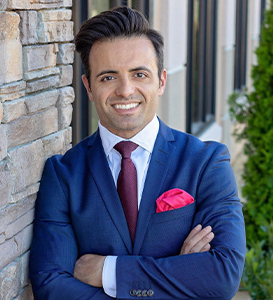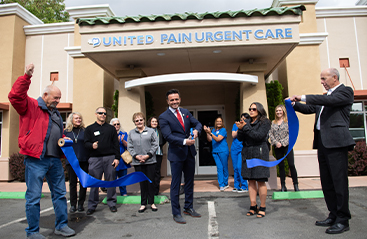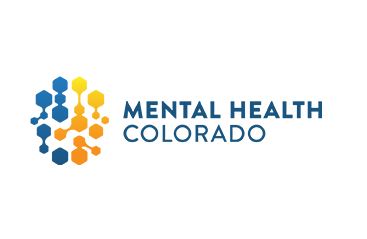In April, I had the pleasure of chatting with Dr. Ali Nairizi, a board-certified interventional pain specialist and board-certified Anesthesiologist based in Nevada, who is dedicated to optimally managing his patients pain using non-opioid methods. Our conversation is below:
Tell us about yourself-what is your background and what sparked your interest in acute pain management?

I am a board-certified pain specialist and a board-certified anesthesiologist, and I have been practicing in northern Nevada for over seven years in the field of pain management. I had been treating chronic pain for quite a while and I started to become passionate about treating acute pain because chronic pain starts from acute pain. Acute pain is what I consider to be the gateway to opioid exposure and prolonged opioid usage because patients are often prescribed high levels of opioids to manage pain after surgery or an injury.
I began to work with Voices for Non-Opioid Choices to advocate for increased access to non-opioid options to manage acute pain by supporting legislation, like the NOPAIN Act, that could remove barriers to accessing these options. I am also using technologies traditionally used in the chronic pain setting to manage acute pain to help bridge the gap in pain management by and use more tools to manage acute pain. My goal is not to take opioids completely away from patients, as there is use for them, but not everyone needs opioids.
Patients need options, so that has been my focus.
Can you tell us a bit about where you work?
I currently have two practices: Reno Tahoe Pain Associates, which focuses on chronic injuries like back and joint injures, and United Pain Urgent Care, which is the first and only urgent care for pain and injury. We treat patients with novel technologies and in-house developed treatments, and we also conduct clinical research to optimize our treatment of joint, neck, and back pain.
At United Pain Urgent Care, it took over a year and a half to figure out all the logistics associated with opening an urgent care that focused solely on pain. Because the concept is so new, we worked with consulting companies and community leaders to understand how to bridge the pain management gap. For example, let’s say you have an excruciatingly painful back spasm while you are at home. What options do you have? You can call your primary care physician and they might say that they wouldn’t be able to get you in to the office for a few weeks, but they could send you pain medication in the meantime. You could go to the emergency room, but ERs are designed for life threatening issues like heart attack or stroke. You sit there for several hours and then when you are seen you might get some x-rays or CT-scans, some pain medicine and a muscle relaxant, but they don’t have much at the ER to treat your back pain specifically.
There is a large gap in the urgent management of acute pain. When you look at the evidence around opioid misuse and abuse, one of the factors is the initial exposure. If you are not exposed initially, especially in an acute pain management setting, there is less likelihood of misuse. In addition to managing acute pain post-surgery, we need to be able to rapidly manage acute pain that occurs in non-surgical settings, such as fractures, back injury, and migraine pain.
At United Pain Urgent Care, healthcare providers are trained to treat non-surgically induced pain. If you had back pain and wanted to be treated immediately, you could just walk into our urgent care, no appointment necessary. We can do imaging of the affected area and upload to the cloud where our on-call radiologists diagnose the pain and provide patient reports. Then we proceed with a tailored treatment. For example, we offer nerve blocks, which are typically only available in the surgical setting. Before we discharge the patient, we provide detailed notes, so the patient knows what to do if unmanageable pain comes back.
What patient populations do you serve?
The population is varied and dependent on the pathology being treated. Typically, we see more women than men for migraine headaches. We see a lot of older men and women with back pain or historical pain. We see younger men and women with sports injuries.
What inspired your group to create a non-opioid preoperative pain management experience for patients?
Working in a state that has been hit heavily with opioid overdose deaths motivates me to try to control pain before it gets to the chronic state. By the time some patients get to my practice and have been using opioids long term, it is hard for them to explore other treatment options. I felt that I needed to intervene when the injury initially happens to get in front of the pain and help prevent it from becoming chronic pain. I also ensure that patients know their pain management options.
We started conducting educational webinars to increase the awareness of non-opioid options to manage pain. There is such a gap in knowledge of the options to manage pain after injury. Some people think you only have two options: have surgery or take opioids, but not every injury requires surgery and not every surgery fixes the problem. Unfortunately, many people don’t have enough information to know what these non-opioid treatments are. My job is to raise awareness and to intervene by helping my patients manage their pain safely.
What positive downstream affects have you seen since you implemented your program?
We are thankful for the press we are getting on our unique pain urgent care center. It’s interesting for reporters and journalists because we are the first and only urgent care for pain and injury in the United States. Also, the Journal of Urgent Care and Medicine did a short feature of us, which shows us that there is support for our work nationally. Patients who have utilized our service are satisfied because it’s a better experience than being treated in an emergency room. In the past week, I have been approached by some local emergency room physician colleagues who asked if they could refer patients to us instead of them continually visiting the emergency room treat their pain. My colleagues recognize that we are better equipped to treat patients with non-emergent acute pain. The goal of every physician is to help patients get the best and safest treatment that results in the best outcome. This is an opportunity to help many people in the community and we are very excited.
What are the next steps/future directions?
Our next step is to figure out how to expand our pain urgent care center statewide, and one day, nationally. One of our biggest challenges currently is working with insurance companies. Historically, when a clinician wants to perform an interventional treatment procedure for a patient, they need prior authorization, which can take up to 7 business days. This doesn’t make sense when the patient comes into the urgent care for acute injury – you need to provide treatment right away. On the other hand, if you want to prescribe opioids, there is no prior authorization for that, and insurance companies will approve right away. So, there is still work to be done to get these companies to understand the benefits of our process. The insurance company will ultimately save more by following the alternative route because these patients are not going to the emergency room, which is more expensive than going to urgent care. We have had success with some insurance companies, but we are still working with others so they can see the value of our center. I am hoping with the help of the press and community leaders, we can shed more light on the benefits of our center and the benefits of having more centers like ours in communities across the country.



